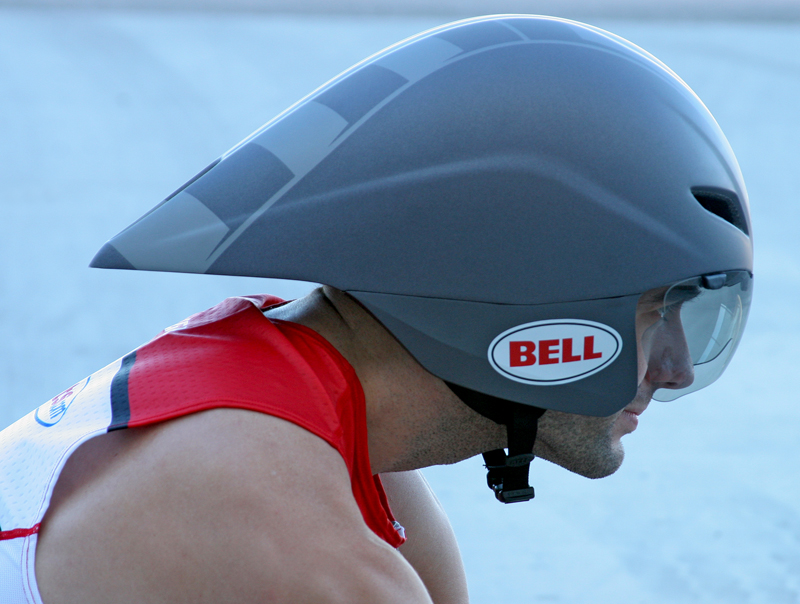By Tom Demerly.
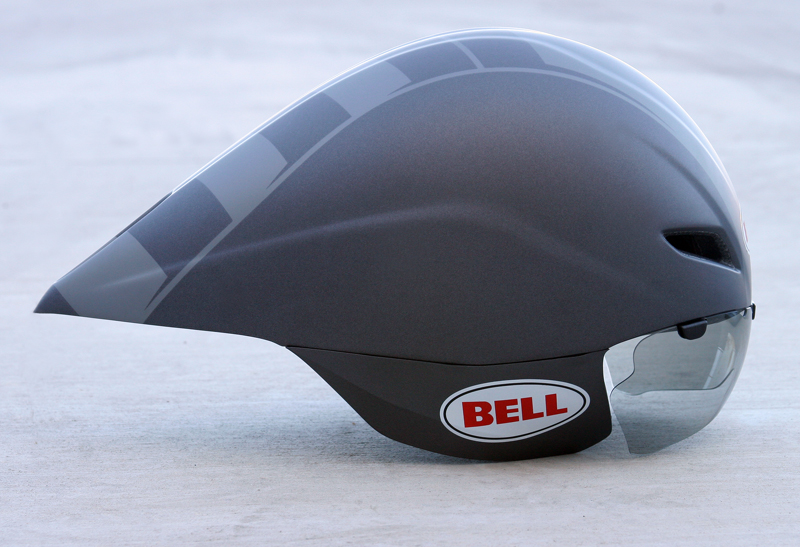
Bell Sports USA has released their new Bell Javelin aerodynamic helmet in time for the 2012 race season. The Javelin is a lightweight, integrated visor aerodynamic helmet with design features for quick donning and removal, making it an option for multisport users.
“The older Bell Meteor is not CPSC approved, the new Bell Javelin is CPSC approved for triathlons.”

The Javelin joins the massive Bell helmet line-up for the U.S. market. It is not to be confused with the Bell Meteor, a different Bell aerodynamic helmet intended for the European retail market. The Meteor is an earlier design that lacks the new U.S. Javelin’s integrated visor and SeamFlex ear fairings. The Bell Meteor is not CPSC approved, the new Bell Javelin is. Some U.S. consumers bought the Meteor and used it in U.S events. According to most sources, the Bell Meteor complies with USA Cycling helmet rules with it’s European CE EN1078 certification (http://www.usacycling.org/news/user/story.php?id=2109). However, according to USA Triathlon rule Article 5, 5.9A, “a. Type of Helmet. All participants shall wear a protective head cover, undamaged and unaltered, which meets or exceeds the safety standards of the Consumer Product Safety Commission (CPSC)” , the Bell Meteor is notlegal for USAT sanctioned triathlon use. This information is according the .pdf document “USAT Approved Helmets Notice” using USAT Commissioner of Officials, Charlie Crawford, as the source.
As aero helmets go the Javelin is relatively light weight, especially compared to longer tailed versions. The new Bell Javelin weighs 442 gramsactual measured weight in a size Large with the removable visor attached. Aero helmet pundits use helmet weight as an argument against aero helmets on hilly courses but the aerodynamic benefits above 18 M.P.H. substantially exceed any drawback from weight than a non-aero, ultra-lightweight helmet. Director of Marketing for Bell Sports, Don Palermini, told me;
“I think a more apples-to-apples comparison of weight would be to remove the shield and then put it on the scale. Most other TT helmets don’t have a shield, making them lighter by virtue of omission. If you weighed competitive helmets with a pair of sunglasses that would be somewhat equivalent, though our shield is heavier than most sunglasses as it is large for optimal aerodynamics—something you don’t get with separate eyewear. My personal size medium helmet weighs 408 grams without the shield (a little better than most CPSC TT lids) and 436 grams with the shield installed.”
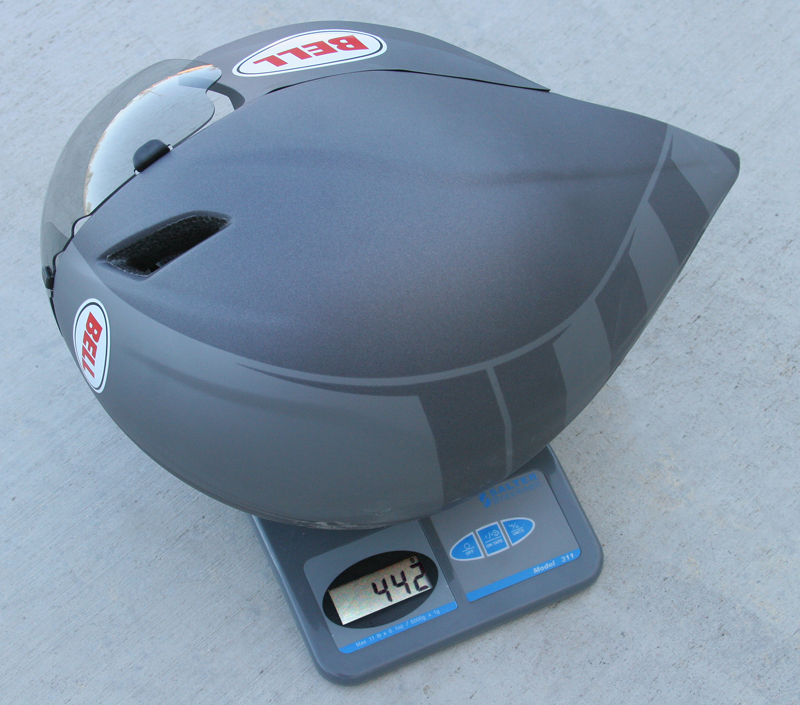
The Bell Javelin features a tinted visor that eliminates the need for donning sunglasses in the transition area and improves the overall aerodynamics of the helmet. The visor is removable via a series of snaps that worked well when we carefully removed and replaced the visor on a production Javelin. The visor is lightly tinted so should provide enough sun and glare protection for most conditions.
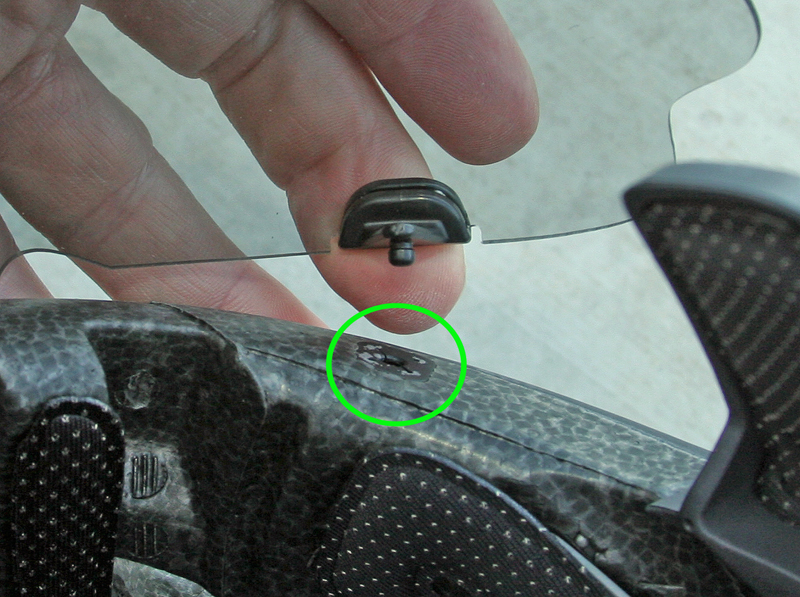
When we opened the box on the Bell Javelin we initially thought the ear covers were also removable, like the Giro Selector. The ear covers are not removable on the Bell Javelin. They are, however, a slightly different polymer than the main helmet shell. The ear covers are relatively flexible, allowing much faster donning than other helmets we’ve tried with ear covers. This quick-don feature of the ear covers along with the fairing and other features make the Javelin a strong option for triathletes.

The expanded polystyrene or EPS impact absorbing material in the Bell Javelin extends all the way to the tail of the fairing. This adds durability and stiffness to the helmet. There are three large vents in the helmet shell. The vents are oriented to help heat rise from the helmet at low speeds, as with climbing a hill, and vent through the helmet at high speeds.
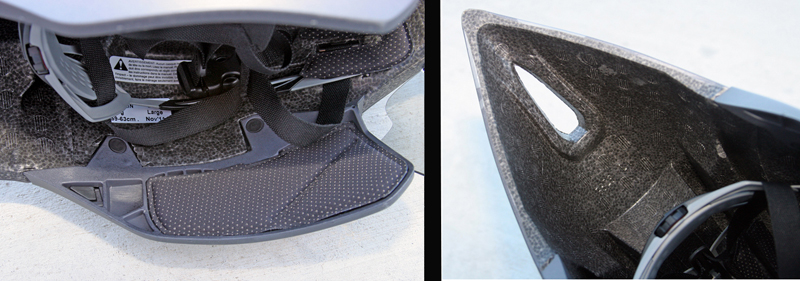
Another quick-donning feature of the Bell Javelin is the adjustable helmet fit hatband. Almost every modern road helmet has some type of size adjustment but some aero helmets lack this useful feature. If you are a Bell Helmet owner already this adjustment wheel will be familiar. For transition you can just open the hatband up for quick donning and then snug the helmet down with the adjustment wheel with one hand on the fly. The ratcheting adjustment is easy to use.

Overall the new Bell Javelin is more comfortable than other aero helmets I’ve worn. The ventilation worked well even in a quick test ride at low speeds. I wouldn’t hesitate to use this helmet even in hot conditions. There are a boggling five color schemes in the Bell Javelin. The helmet is sold in three sizes, Small, Medium or Large. At a 7&1/4 hat size I took the size Large. The helmet runs slightly small compared to Bell road helmets, in which I wear a Medium.
Mr. Don Palermini of Bell Sports, USA mentioned “The Javelin goes on with less “ear impact” if you put it on back-to-front pulling the straps and ear flaps open as you do so.” We tried this high speed donning technique, pulling the helmet on from back to front, and found Palermini was right. This is another feature that makes the helmet work well for triathletes.
Most CPSC approved aero helmets look enormous as viewed from the front and the Bell Javelin has that slightly “martian” appearance. That said, an aero helmet is one of the least expensive ways to save substantial time on the bike.
Bell has achieved one of the most practical, comfortable and overall “wearable” helmets in the new Javelin. At $199.99 it is in line with most other high end aero helmets with a visor and less than Giro’s Selector. The Bell Javelin is an aero helmet intended for multisport athletes, as opposed to the Giro Selector which is better suited for bicycle time trials where quick donning is not a concern. In only one ride I would add the new Bell Javelin to my very short list of favorite aero helmets that includes the Spiuk Kronos, a longer tail helmet with no visor provision and fewer sizes. Bell did a very good job with the Javelin aero helmet, a welcome addition for multisport aero helmet users.
